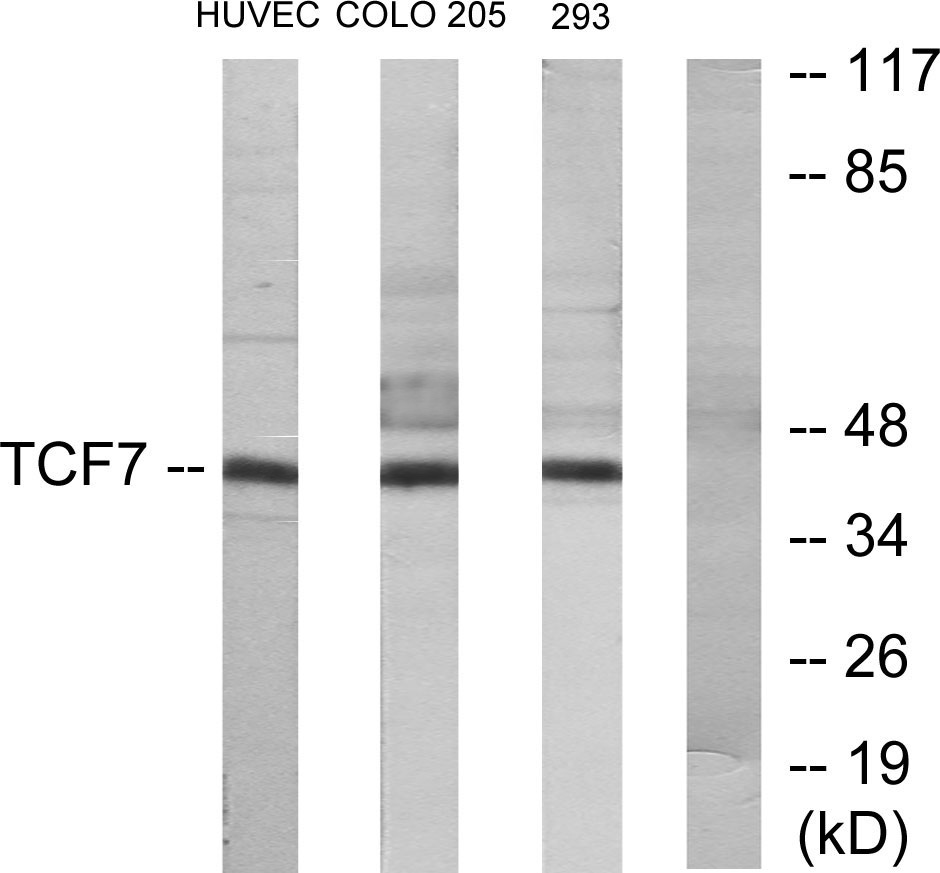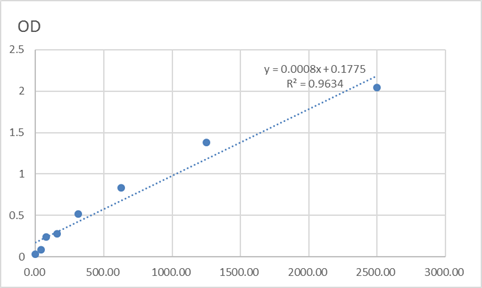Total TCF-1 Cell-Based Colorimetric ELISA Kit
- Catalog No.:KA3597C
- Applications:ELISA
- Reactivity:Human;Mouse
- Gene Name:
- TCF7
- Human Gene Id:
- 6932
- Human Swiss Prot No:
- P36402
- Mouse Swiss Prot No:
- Q00417
- Storage Stability:
- 2-8°C/6 months
- Other Name:
- Transcription factor 7 (TCF-7) (T-cell-specific transcription factor 1) (T-cell factor 1) (TCF-1)
- Detection Method:
- Colorimetric
- Background:
- alternative products:2 series of isoforms, L and S, are produced by use of alternative promoter usage. Additional isoforms seem to exist,function:Transcriptional activator involved in T-cell lymphocyte differentiation. Necessary for the survival of CD4(+) CD8(+) immature thymocytes. Isoforms lacking the N-terminal CTNNB1 binding domain cannot fulfill this role. Binds to the T-lymphocyte-specific enhancer element (5'-WWCAAAG-3') found in the promoter of the CD3E gene. May also act as feedback transcriptional repressor of CTNNB1 and TCF7L2 target genes. TLE1, TLE2, TLE3 and TLE4 repress transactivation mediated by TCF7 and CTNNB1.,induction:By TCF7L2 and CTNNB1.,sequence caution:Wrong choice of frame.,similarity:Belongs to the TCF/LEF family.,similarity:Contains 1 HMG box DNA-binding domain.,subunit:Binds the armadillo repeat of CTNNB1 and forms a stable complex. Interacts with AES, TLE1, TLE2, TLE3 and TLE4.,tissue specificity:Predominantly in T-cells. Also detected in proliferating intestinal epithelial cells and in the basal epithelial cells of mammary gland epithelium.,
- Function:
- transcription, regulation of transcription, DNA-dependent, regulation of transcription from RNA polymerase II promoter,immune response, cell surface receptor linked signal transduction, Wnt receptor signaling pathway, regulation of transcription, regulation of RNA metabolic process,
- Subcellular Location:
- Nucleus.
- Expression:
- Predominantly expressed in T-cells. Also detected in proliferating intestinal epithelial cells and in the basal epithelial cells of mammary gland epithelium.
- June 19-2018
- WESTERN IMMUNOBLOTTING PROTOCOL
- June 19-2018
- IMMUNOHISTOCHEMISTRY-PARAFFIN PROTOCOL
- June 19-2018
- IMMUNOFLUORESCENCE PROTOCOL
- September 08-2020
- FLOW-CYTOMEYRT-PROTOCOL
- May 20-2022
- Cell-Based ELISA│解您多样本WB检测之困扰
- July 13-2018
- CELL-BASED-ELISA-PROTOCOL-FOR-ACETYL-PROTEIN
- July 13-2018
- CELL-BASED-ELISA-PROTOCOL-FOR-PHOSPHO-PROTEIN
- July 13-2018
- Antibody-FAQs



